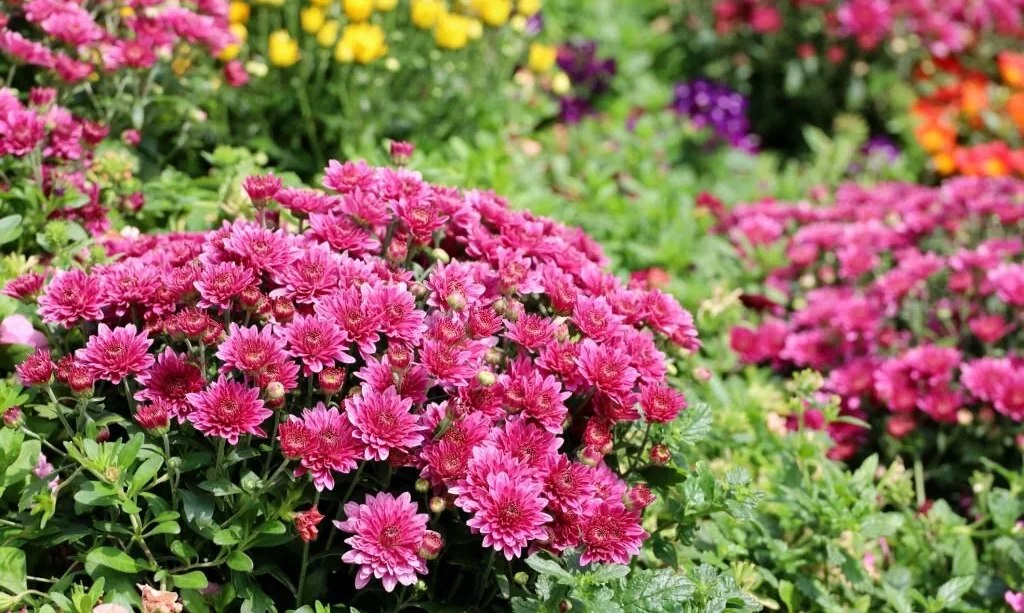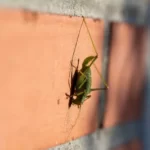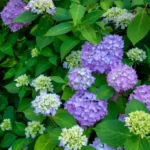Chrysanthemums, affectionately known as mums, grace gardens and floral arrangements with their dazzling array of colors and captivating blossoms. These ornamental flowers are heralded as late-season bloomers, adding a burst of color to gardens when many other plants have completed their annual display. Yet, amid their resplendent beauty lies a curious enigma: Which animals are irresistibly drawn to the allure of mums? In this exploration, we embark on a journey to unravel the mystery of which creatures find chrysanthemums delectable and what motivates this fascinating phenomenon.
- Hardiness zone.5-9
- Grow.Sow seeds thinly and barely press in. Do not cover with soil as light aids germination.Keep the soil moist at 70-75 degrees F.Seedlings emerge in 10-21 days.
- When to plant.Mums are hardy perennials best planted in early spring.
- Color.Mix of orange, peach, pink, red, yellow, and white shades.
- Self-seeding.Grow from seed and enjoy growing with your family
The Marvelous Mums: A Garden Treasure
Chrysanthemums, with their myriad varieties and kaleidoscope of colors, stand as one of horticulture’s cherished treasures. These enchanting plants, often referred to as “mums,” offer a spectacular show of late-season blooms that punctuate gardens with their vivid and diverse petals. Mums are beloved for their ability to infuse life into outdoor spaces as autumn approaches, bringing vibrant shades of crimson, gold, and a wealth of other colors to the garden canvas.
The significance of mums in the world of horticulture extends beyond their aesthetic allure. They provide versatility as both garden additions and cut flowers in bouquets, making them a choice flower for florists and garden enthusiasts alike. Mums symbolize resilience, blooming when other plants have wilted, and as such, have become a quintessential fall bloom. Their presence in the garden raises the question: What could possibly resist the allure of these magnificent late-season stars?
Hungry Herbivores: Animals That Consume Mums
Nature’s intricate web introduces a diverse cast of herbivores that have been observed partaking in the chrysanthemum feast. These animals, spanning the spectrum from insects to mammals and other curious critters, display a unique affinity for munching on mums. The motivations behind their attraction to mums are equally diverse, ranging from fulfilling nutritional needs to satisfying their taste preferences.
To delve into the world of animals that consume mums, we must explore the interplay between these herbivores and these ornamental flowers. In the forthcoming sections, we’ll delve into the culprits behind the chrysanthemum munching, deciphering why insects nibble on the leaves and blossoms, why mammals may find mums to be a delectable meal, and the role of birds in the world of chrysanthemum seed consumption. The garden, it seems, holds secrets and surprises even in the face of seemingly delicate flora.
The Culprits: Insects and Mums
While the splendor of mums enchants garden enthusiasts, it’s essential to acknowledge that insects, too, have a role in this botanical dance. Some insects, such as aphids and spider mites, are notorious for their affinity for chrysanthemums. These tiny culprits have a knack for nibbling on the tender leaves and savoring the rich nectar offered by mum blooms.
Aphids, in particular, are common assailants, often congregating on the undersides of chrysanthemum leaves to siphon off their sweet sap. The result can be curling, yellowing leaves and diminished blooms. Spider mites, on the other hand, are arachnids with a penchant for inflicting damage on mum leaves. Their fine silk webbing can often be observed on the plant, signaling their presence.
The encounter between insects and mums underscores the intricate relationships within garden ecosystems. Some insects pose significant challenges to gardeners, leading to the exploration of eco-friendly pest control methods and beneficial insects that counteract their impact.
Four-Legged Foragers: Mammals and Mum Munching
As the botanical banquet unfolds, herbivorous mammals enter the scene, each with its own preferences and tastes. Among these creatures, deer and rabbits are known to graze on chrysanthemum plants. With their gentle grace, deer can be particularly alluring yet problematic visitors in the garden. Their penchant for browsing on the lush greenery of mums may result in defoliated plants and diminished blooms.
Rabbits, those agile and voracious foragers, are equally drawn to chrysanthemum leaves. These small mammals often view mums as a delectable part of their menu, which can pose a challenge for gardeners seeking to preserve their prized plants.
Coping with these four-legged foragers necessitates the use of practical strategies that both protect mums and foster coexistence with local wildlife. Fencing, netting, and deterrents are among the methods employed to discourage deer and rabbits from indulging in the garden’s greenery while respecting the delicate balance between flora and fauna.
Avian Appetites: Birds and Chrysanthemum Seeds
Beyond insects and mammals, the enchanting world of mums is also an alluring destination for our feathered friends. Birds, particularly those with a preference for seeds, may find chrysanthemum seeds a tempting source of sustenance. Species like sparrows, finches, and doves are often observed foraging among mums to feed on the seeds these plants produce.
This interaction between birds and mums reveals a fascinating ecological connection. As birds dine on chrysanthemum seeds, they contribute to the plant’s role in the cycle of life. In their quest for food, these avian visitors may inadvertently aid in the dispersal of mum seeds. This not only extends the reach of chrysanthemum plants but also illustrates the intricate interdependence of plants and animals in the garden ecosystem.
Coexisting with Mums: Prevention and Management
As we marvel at the diverse appetites for mums exhibited by nature’s creatures, the question arises: How can garden enthusiasts protect their cherished chrysanthemums while harmoniously coexisting with the local wildlife? A variety of practical strategies can be employed to effectively manage chrysanthemum grazers and safeguard these garden treasures.
For those contending with insect pests, adopting organic pest control methods like neem oil, insecticidal soaps, or introducing beneficial insects can help keep infestations in check. These eco-friendly measures are not only effective but also gentle on the overall garden ecosystem.
When dealing with herbivorous mammals like deer and rabbits, the use of physical barriers, such as fencing and netting, proves invaluable in safeguarding mums from nibbling intruders. Scent deterrents or natural repellents are additional options to discourage these mammals from dining on your garden’s greenery.
For bird enthusiasts, creating designated feeding stations with alternative seed sources can divert the attention of seed-eating birds away from chrysanthemums while still providing a welcoming habitat for avian visitors. This approach allows both mums and the feathered friends to thrive in the same garden space.
Conclusion
The world of chrysanthemums unfolds as a vibrant tapestry rich in color and texture, but it is the interactions between these blossoms and the natural world that lend it an aura of intrigue. In discovering which animals eat mums, we uncover a fascinating dynamic of creatures and plants coexisting within our gardens.
While the presence of these creatures may present challenges to gardeners, it also reminds us of the delicate balance between nurturing our beloved chrysanthemums and respecting the natural world. It is in this balance that we discover the true beauty of our gardens. The world of mums beckons us to appreciate the intricate relationships and connections that exist in our outdoor spaces, where both the flora and fauna play their vital roles in the timeless dance of life.




